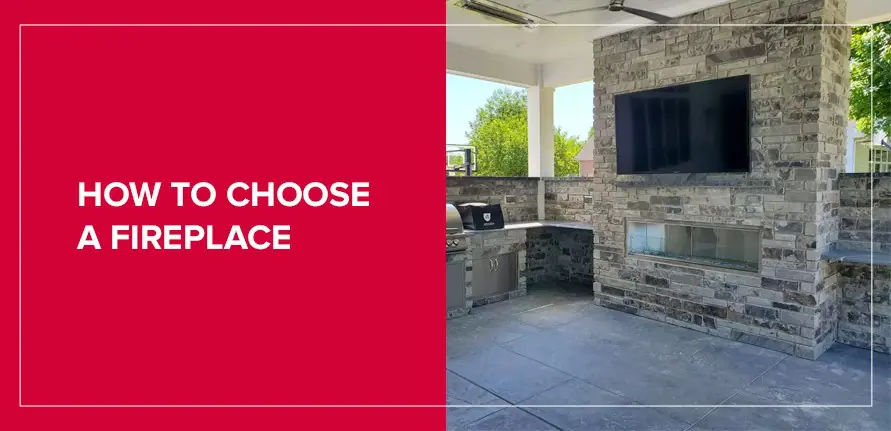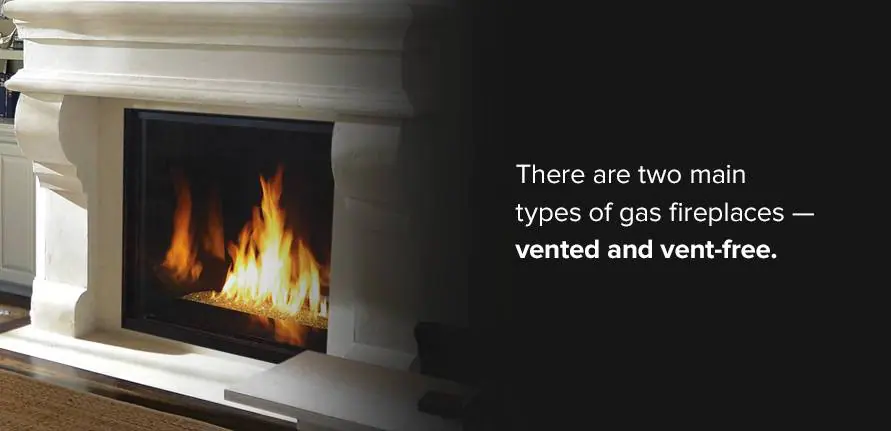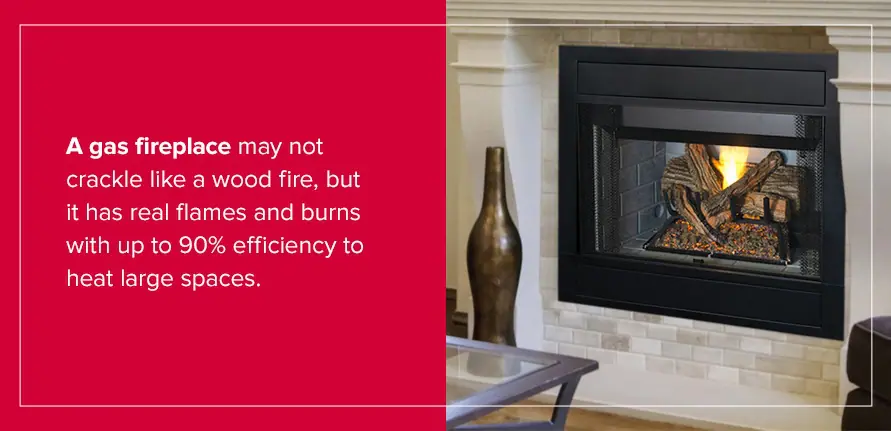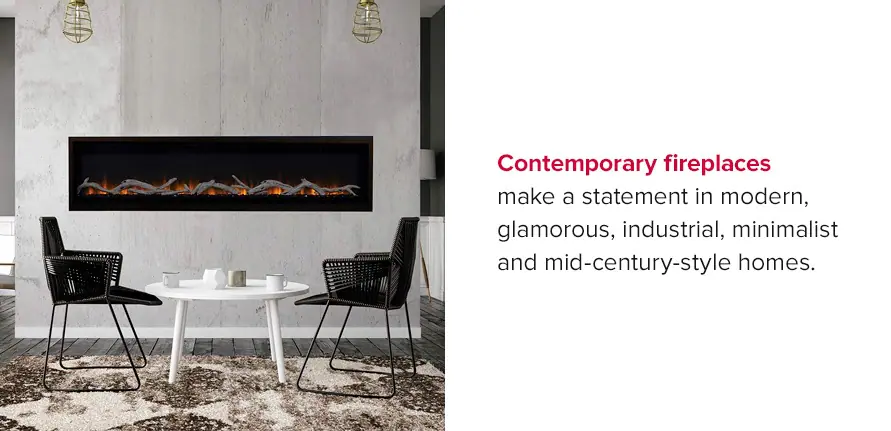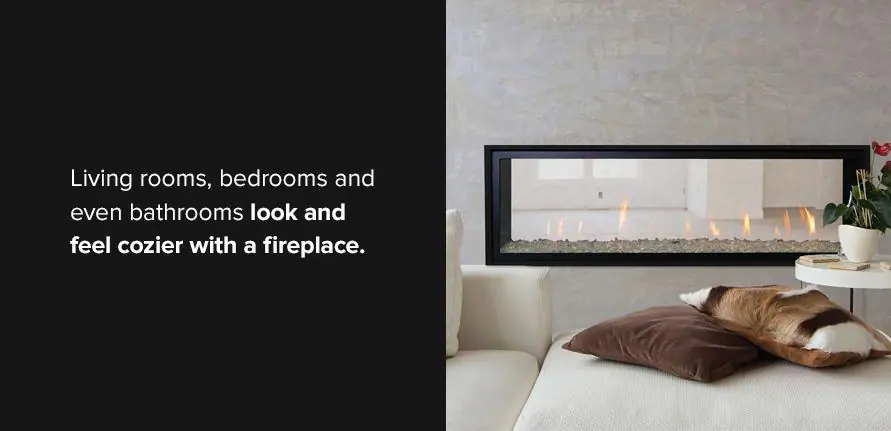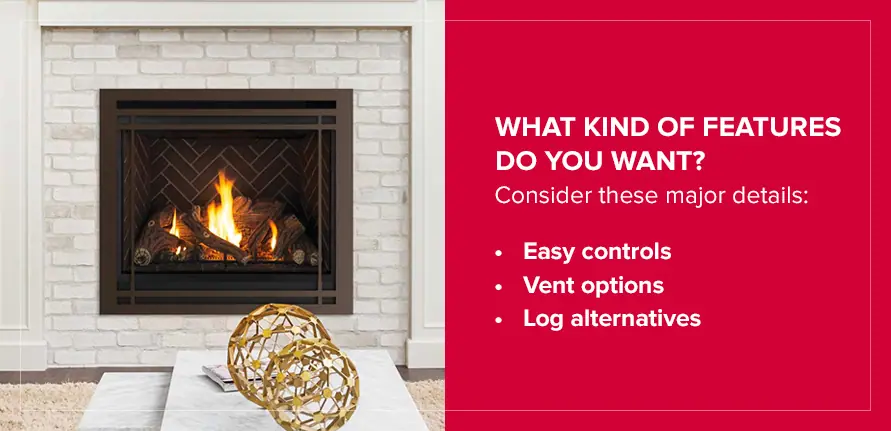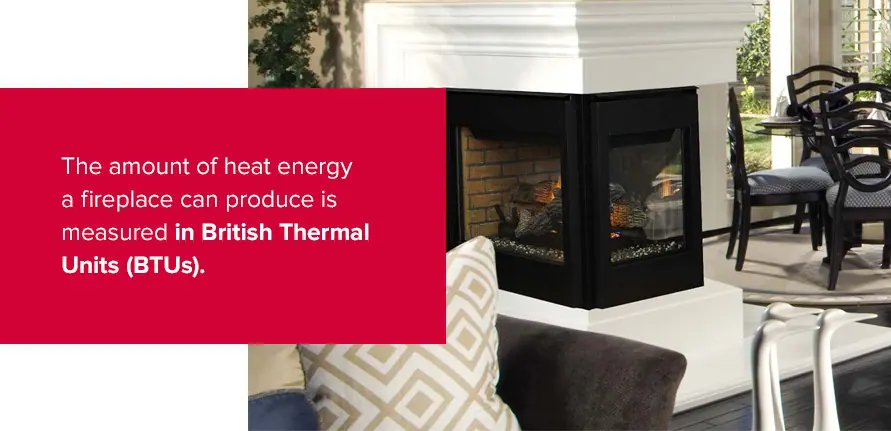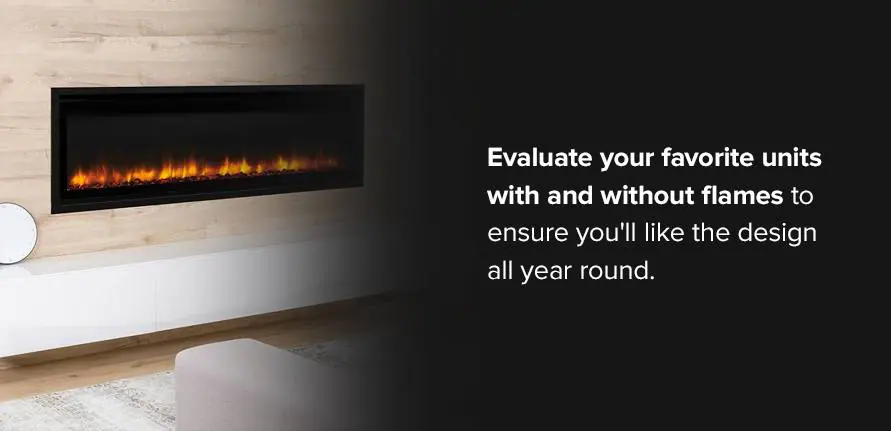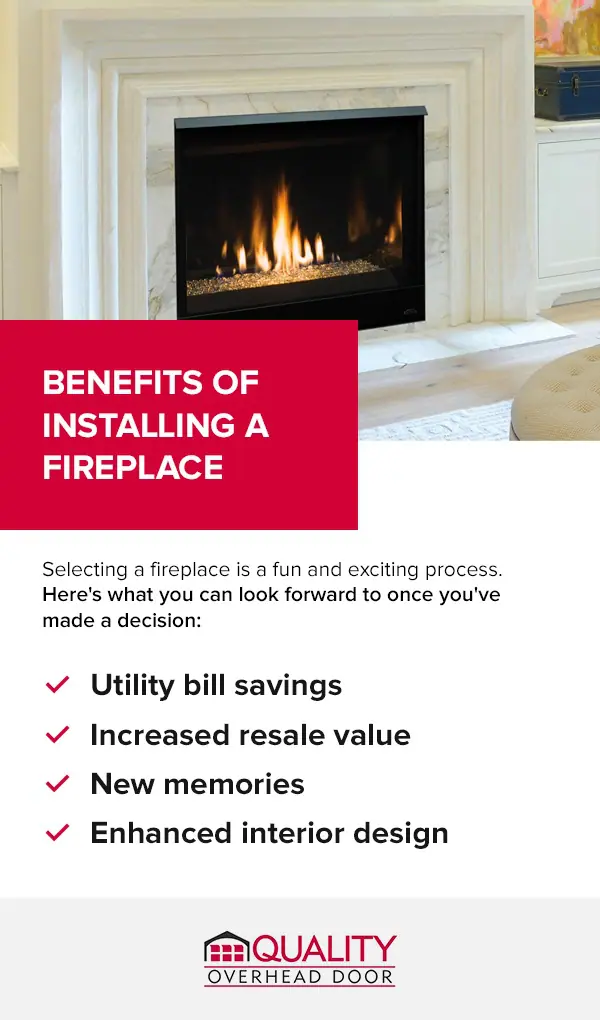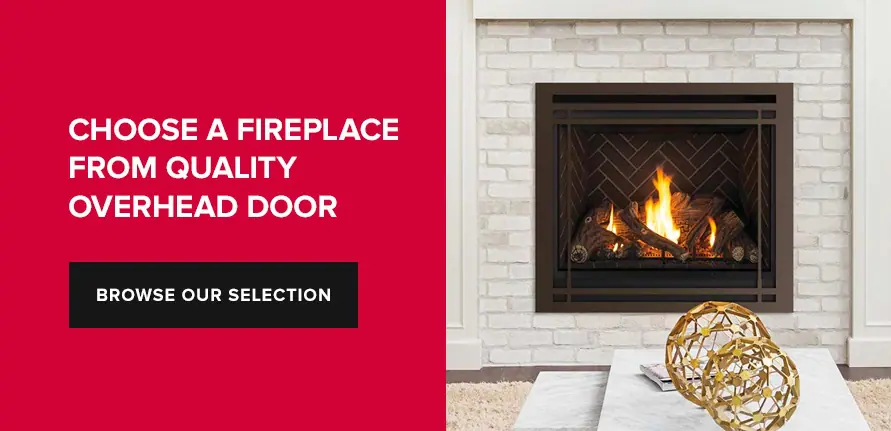Adding a fireplace or replacing an old one will significantly impact your home’s look and feel. It becomes the focal point of the room, adding warmth and charm. There’s nothing like curling up on a cold winter morning next to a crackling fireplace. Fireplaces make homes feel cozy and inviting. Plus, they may even boost your house’s resale value by a few thousand dollars.
With so many options, choosing a new fireplace can seem overwhelming. You want something that looks good and functions well in your space. This in-depth guide will explain everything involved in the process so you know which fireplace to choose.
What Kind of Fireplace to Choose
One of the first decisions you have to make is what kind of fireplace works best for your home and lifestyle. Wood, gas and electric fireplaces have unique pros and cons. You have many things to consider, from the installation process and appearance to the maintenance and fuel requirements.
Here’s an overview of the different types to help you choose the right one for your home:
1. How to Choose a Wood Fireplace
A stone chimney and a fireplace filled with burning logs is the classic fireplace most people imagine. Wood burning fireplaces produce the genuine look, sound and smell of a wood fire. They are arguably the most beautiful option, but the natural aesthetic comes at a cost.
Wood fireplaces are the most challenging to install and maintain. It can cost up to $350 per foot to install a new chimney, plus another $130 to $380 per year to keep it clean. If you already have a chimney, installation is much more affordable. Either way, the finished product is well worth the investment and will last for decades. Plus, wood is the most affordable fuel. You may even be able to cut some for free from your backyard.
Wood fireplaces require careful monitoring for safety reasons, but they’re great to have during an emergency. If the power goes out, you can use your fireplace to heat your home, light the room and even cook dinner.
When you’re choosing a wood-burning fireplace, look for units large enough to heat your space without overpowering the room. They come in various configurations, so you’ll surely find something that works for your home.
2. How to Choose a Gas Fireplace
Gas burning fireplaces are realistic alternatives to wood versions. Instead of burning wood, the flames are fueled by natural gas or propane. Most gas fireplaces feature decorative ceramic logs that replicate real wood. Fireballs, glass rocks and stones are also popular fillers to give the fireplace a modern vibe.
There are two main types of gas fireplaces — vented and vent-free. Direct vent fireplaces produce a small amount of smoke that requires ventilation. You can install a direct-vent gas insert inside your home if you have a chimney. Otherwise, opt for a ventless gas fireplace. They don’t produce harmful emissions. You must connect either type to an outside source or your home’s existing gas supply.
Gas burning fireplaces are efficient and produce the most heat. They’re also cleaner and more environmentally friendly. Unlike wood fireplaces, you can easily adjust the heat by turning the gas up or down. To extinguish the fire, you simply turn the gas off. Since they run on gas, they can also produce light and heat during a power outage.
When you’re choosing a gas fireplace, pick the venting option that works best with your home. You can also mix and match a wide range of designs and opening styles to blend the fireplace with your interior decor.
3. How to Choose an Electric Fireplace
An electric fireplace is the easiest to install by far. Although it looks like a fireplace, there is no fire involved. You simply plug it into an outlet, and it blows heat into the room like an electric heater. Since it doesn’t produce fumes or soot, there’s no need for ventilation or maintenance. Electric fireplaces switch on and off with the press of a button.
Most imitate real fire with a combination of faux logs in front of digital flames. You can usually display flames without heat or heat without flames. That way, you can enjoy the ambiance of a flickering fire all year long. Some even let you choose the fire’s style and color.
They’re the most energy-efficient option and could even help you decrease your utility bill. Instead of running the furnace to heat the entire house, you can use your electric fireplace to heat the room where you spend most of your time. They’re also much safer to use around small children and pets.
As long as you have electricity, you can install an electric fireplace in nearly any living space. All you have to do is choose the size and style that work best for your home.
Choosing a Fireplace for Your Home
Another important detail to consider is which kind of fireplace fits your home’s design and layout. To find the answer, ask yourself the following questions:
1. Why Do You Want a Fireplace?
A fireplace serves two main purposes:
- Provides heat: The fireplace’s heat will make the room feel warm and toasty.
- Improves the ambiance: A real fire provides gentle lighting, soft crackling and a comforting scent that will make your space feel cheerful and cozy.
Which of these functions is the most important for your home? Or, do you want a fireplace that does both?
An electric fireplace is the most efficient option for providing heat, but the faux flames aren’t quite as charming as the real thing. Wood-burning fireplaces provide the ultimate sensory experience with an authentic log fire. However, over 90% of the heat they create escapes through the chimney. A gas fireplace may not crackle like a wood fire, but it has real flames and burns with up to 90% efficiency to heat large spaces.
Electric fireplaces are the ideal heat source, wood fireplaces set the mood and gas fireplaces are a mix between the two. Understanding why you want a fireplace in your home will help you choose one that meets your needs.
2. What Style Fireplace Do You Want?
Wood, electric and gas fireplaces come in unique styles to suit your home’s design and function. Here are some of the most popular designs to consider:
- Traditional: Natural logs burning in front of a classic brick liner create a traditional aesthetic that looks excellent in almost any interior. Traditional fireplaces blend perfectly with farmhouse, Victorian, nautical, Mediterranean, rustic and craftsman-style homes. You can find traditional fireplaces that are electric, gas or wood-burning.
- Contemporary: Glowing flames over glass rocks, stones and other unique materials give your fireplace a modern vibe. Contemporary fireplaces make a statement in modern, glamorous, industrial, minimalist and mid-century-style homes. You can achieve this look with electric or gas-fueled fireplaces.
- Open-hearth: Enjoy the beauty of an authentic fire with an open-hearth wood-burning fireplace. There are no barriers between you and the crackling logs unless you close the protective mesh screen.
- High-efficiency: High-efficiency wood-burning fireplaces are insulated with ceramic glass doors for maximum heat transfer. They’re warmer and safer and equally beautiful.
- Firebox only: A firebox-only gas fireplace looks like a traditional wood-burning hearth. This simple design highlights the gorgeous flames with no glass barrier to clean. Mesh draw screens provide optional safety and a more realistic appearance.
- Front-view: Most people choose front-view fireplaces to add heat and visual appeal to any space. They are installed against the wall or mantle, so you have a clear view of the fire from the front.
- Multi-view: With a multi-view fireplace, you can watch the fire burn from two or more sides. Multi-sided fireplaces come in several unique configurations. For instance, a peninsula-style fireplace sits inside the wall with three glass sides so you can see through the flames to the other side of the room. They’re typically gas models for safety and installation purposes.
3. Where Are You Putting the Fireplace?
A fireplace is a perfect addition to almost any room. Living rooms, bedrooms and even bathrooms look and feel cozier with a fireplace. If you’re not sure where to put your fireplace, consider the following ideas:
- Front and center: If you have an open concept house, anchor the space with a stunning multi-view fireplace right in the middle. That way, you can enjoy the look and feel of a crackling fire from the living room, kitchen and dining area.
- Living room: The living room is the heart of the home, where the whole family can gather to spend time together. A fireplace helps make the space even more comfortable and inviting. You can light the fire on Christmas morning, movie night or any other occasion to make it feel intimate and special.
- Dining room: Whether you host meals around the kitchen table or formal dining room, a fireplace will make the space feel luxurious.
- Bedroom: There’s nothing like snuggling up in bed on a frosty morning with a cup of coffee and the fireplace burning. Installing a fireplace will transform your bedroom into a relaxing escape from your busy life.
- Bathroom: Imagine taking a hot bath with a warm fire gently burning in the background. Your bathroom will become your sanctuary.
- Outdoors: An outdoor fireplace enhances your backyard, creating the perfect space to relax and entertain guests.
4. What Kind of Features Do You Want?
Knowing which features are most important for your household will help you figure out what fireplace to choose. Consider these major details:
- Easy controls: With a wood-burning fireplace, you have to create the flames yourself with matches, kindling and logs. It takes time and effort to build a fire to heat your home. With an electric or gas model, you can light a fire in seconds with a simple button or switch. Some of them even come with remotes so that you can switch on the fireplace from across the room. Electric and gas options also allow you to control the heat to maintain a comfortable temperature.
- Vent options: Venting is an important detail to consider when choosing a fireplace for your home. Wood-burning fireplaces and some gas models require a chimney to vent smoke and gas. If you don’t have an existing chimney, you must install one or choose a ventless option. Electric and ventless gas fireplaces don’t require chimneys and retain more heat.
- Log alternatives: There aren’t many options when choosing firewood for a fireplace. However, with gas and electric fireplaces, you can decorate your fireplace with faux logs and other fire-resistant materials. Ceramic logs are the traditional choice, but you can also use fireballs, driftwood, glass beads, natural stones and faux pine cones to achieve a unique style.
5. How Much Do You Plan to Spend on a Fireplace?
If you’re planning to install a fireplace in your home, you probably have a budget in mind of how much you want to spend. Keep in mind that there may be other costs besides the price of the unit. Here are some potential fees that could impact your decision:
- Installation cost: Installation costs vary significantly based on your home and the type of fireplace you choose. Installing a chimney or changing your home’s structure often requires a large investment.
- Maintenance fees: Electric and gas fireplaces are fairly simple to maintain with basic cleaning. Wood-burning fireplaces require frequent upkeep to ensure they’re safe to use. On average, it costs $205 to $505 per year to have your chimney professionally cleaned and inspected.
- Utility charges: All electric, gas and wood-burning fireplaces burn fuel. Electric fireplaces use electricity, gas fireplaces burn propane or natural gas and wood-burning fireplaces require wood. Consider the impact each type will have on your utility budget to help you decide.
- Finishes: Many fireplace manufacturers allow you to customize certain parts of the design. Swapping out the facade and changing the liner from black porcelain to herringbone brick may increase the unit’s final price.
How to Choose the Right Size Fireplace
When shopping for fireplaces, it’s important to pay attention to the sizing options. You want a unit that fits in your space and provides enough heat to maintain a comfortable temperature. Here are some important factors to consider when choosing the right size gas, electric or wood-burning fireplace:
1. How Much Energy Is Required to Heat the Room?
Whether it’s from wood, electricity or gas, fireplaces release energy to increase the room’s temperature. The amount of heat energy a fireplace can produce is measured in British Thermal Units (BTUs). The larger the space, the more BTUs you’ll need to keep it warm.
To estimate the minimum BTUs required to heat your space, measure the room’s length, width and height and insert them into this simple formula:
- Calculate the volume: Multiply the length, width and height to find the volume. For instance, if the room is 30 feet long, 25 feet wide and 9 feet high, the volume is 6,750 cubic feet.
- Estimate the minimum BTUs: Check the IECC climate zone map to locate your BTU zone. Then, multiply the room’s volume by your BTU zone. For example, If you live in northern Ohio, your BTU zone is five — 6,750 times 5 is 33,750. So, you would need a fireplace that produces roughly 33,750 BTUs or more.
Remember that this is an estimate. Schedule a consultation with an experienced fireplace installation company to get a precise size recommendation.
2. Where Are You Installing It?
If you plan to install your new fireplace inside an existing chimney, you must find an insert that fits inside that space. If you’re building a chimney or choosing a ventless option, you can tailor your design to the insert’s dimensions. Simply measure the area to ensure the appropriate size fireplace will fit. Otherwise, you may need to choose another location for your new fireplace.
Other Important Things to Consider
Installing a fireplace will change your home’s look and feel for generations to come. Choosing the right one for your space and lifestyle preferences is important. Here are some other quick tips to consider:
1. View the Fireplace With and Without Flames
Fireplaces are beautiful when they’re burning. However, your fireplace will likely be off for a significant portion of the year. Evaluate your favorite units with and without flames to ensure you’ll like the design all year round.
2. Choose Finishings That Match Your Decor
Fireplaces often come in various colors and finishes. For instance, if you’re choosing a wood-burning fireplace, you can select the interior liner, protective doors, trim and louvers. If you’re having trouble deciding, use your existing decor as inspiration. Choose colors and materials that will blend with the rest of your home.
3. Consider the Installation Process
Depending on your home and the type of fireplace you pick, installation can take a few days or several weeks. If you have a chimney and wood-burning fireplace built, you must be willing to go several weeks without using that room. The finished product is well worth the wait.
Alternatively, if you’d prefer a less intense installation process, ventless gas and electric fireplaces often take less than a week to install, especially if the surrounding wall or mantle has already been built.
4. Don’t Try to Heat Multiple Rooms With One Unit
Fireplaces are designed to heat the room where they’re located. While they may increase the temperature slightly in surrounding areas, trying to heat multiple rooms will increase fuel costs and make the main space uncomfortably hot.
Benefits of Installing a Fireplace
Selecting a fireplace is a fun and exciting process. Here’s what you can look forward to once you’ve made a decision:
- Utility bill savings: The warmth from your fireplace will keep your family toasty in the winter, so you can lower the heating and save money on your utility bills.
- Increased resale value: Whether you plan to sell your home soon or many years from now, installing a fireplace is a wise investment that will boost your house’s value and help it stand out in the market.
- New memories: Fireplaces create a cozy environment to gather with your family and make lifelong memories.
- Enhanced interior design: Fireplaces completely transform the room’s style and atmosphere. They will provide warmth and beauty to make your space feel more luxurious, relaxing and inviting.
Choose a Fireplace From Quality Overhead Door
At Quality Overhead Door, we provide a range of residential services to improve your home’s beauty and function — including fireplaces. Our fireplaces feature classic and contemporary styles with modern features for added convenience.
Browse our selection of electric, gas and wood-burning designs. We have various options to fit your budget and style, including portrait style, three-sided peninsula, see-through and two-sided corner fireplaces. You’ll surely find the perfect fireplace to provide warmth and a comfortable ambiance.
Our professional team will guide you through the process to help you bring your vision to life. We’ve been providing high-quality products, trustworthy service and top-notch craftsmanship to communities in Toledo and southeast Michigan since 1982. Contact us today to start planning your new fireplace installation!
Additional Resources on Fireplaces:
- Guide to Fireplace Inserts
- Unique Fireplace Designs for Your Home
- Can a Fireplace Add Value to Your Home

